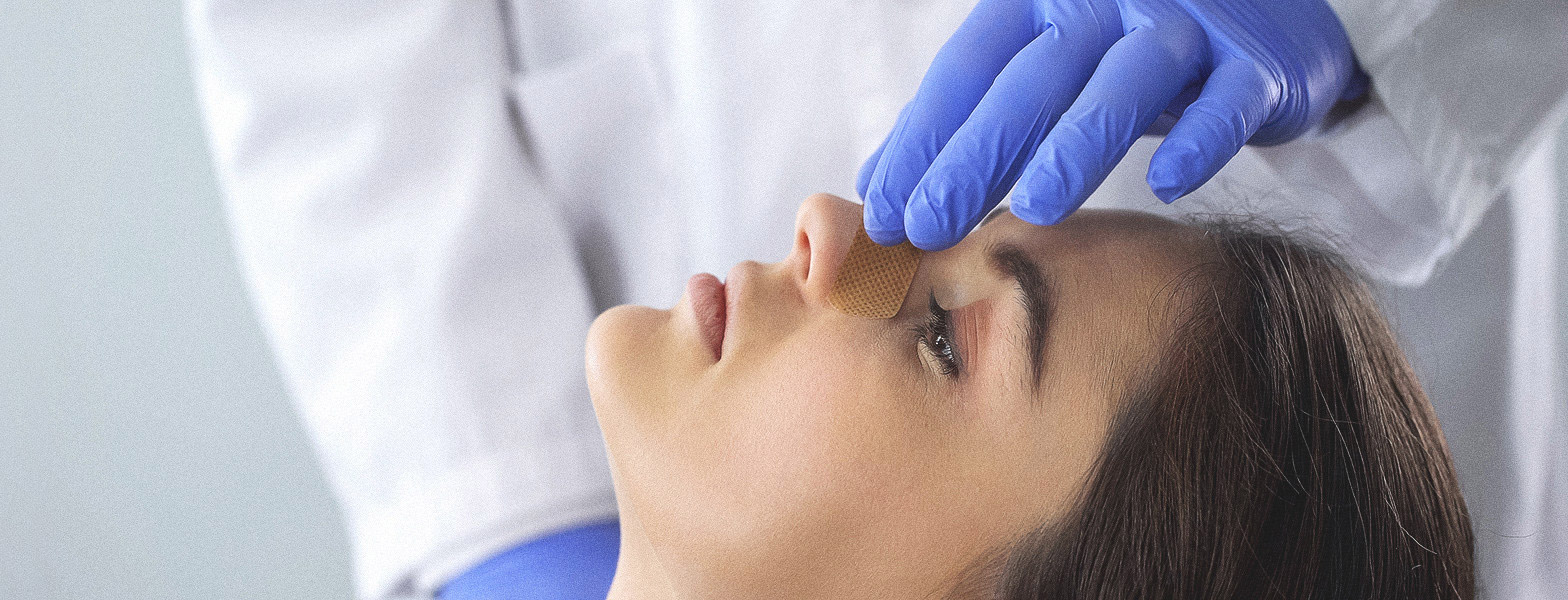Rhinoplasty
The nose is an organ at the center of our face, which we see every day and which is important both for its shape and its role in breathing. Aesthetic nose surgery is the most common plastic surgery. Rhinoplasty is the reshaping, reduction or enlargement of certain parts of the nose. At the same time, nasal reconstruction surgeries can also be performed after nasal deformity due to congenital anomaly or trauma.

The aim of rhinoplasty is to obtain a nose that is proportional to the person's face, natural, with intact functions and that the patient is satisfied with. Surgical or non-surgical interventions can be added to other parts of the face (chin, cheekbone) to achieve an ideal proportion on the face. These interventions can be performed simultaneously with or after the operation.
Which Changes are Frequently Made in the Nose?
- Changes in nose size
- Narrowing in the width of the nose
- Removing the nose hump
- Filing of the bridge of the nose
- Lifting the nasal tip
- Reducing and refining the nose tip
- Reshaping of the nostrils
- Correction of nasal curvature
- Elimination of nasal breathing problems
Before Surgery
Detailed medical information about the person is obtained. The person's thoughts about the nose and expectations from the surgery are discussed. The procedures can be done to the person's nose and the appearance will be obtained are discussed together. External and internal examinations of the nose are performed. If necessary, the internal structure of the nose is examined with Computed Tomography. Appropriate photography and three-dimensional imaging are performed. With artificial intelligence-supported surgery simulations on these three-dimensional images, the patient is consulted about what kind of nose he/she will have after surgery.
There are Two Types of Surgical Methods:
Open Rhinoplasty and Closed Rhinoplasty. Open rhinoplasty is performed with an incision at the tip of the nose and intranasal incisions. In closed surgeries, incisions are made inside the nostrils. Both methods can be chosen according to the person's nasal structure and doctor's knowledge and experience.
Surgery
It is applied under general anesthesia. The operation takes approximately 1 to 2 hours. Depending on the method chosen, septoplasty and rhinoplasty are performed for breathing problems. The cartilage and bone structure inside the nose is reshaped. If we need cartilage, grafts midline cartilage called septum is often used. If there are not enough cartilage in nose, one's own ear or rib cartilage can be used. At the end of the operation, a special splint is applied on the nose often. Tampons are not placed in the nose. At the end of the operation, non-sticking silicone tampons or self-melting spongy tampons that do not need to be pulled out can be placed.
After Surgery
Eating starts after a short time. Cold application is applied on the nose and face. It is recommended to continue this application for the first 24 hours. The patient is mobilized after eating. The patient is discharged on the same day or the next day. If silicone tampon is applied, it is removed after 2 to 3 days. Hair can be washed hairdresser style without wetting the splint on the nose. You can take a shower from the neck down. The splint on the nose is removed on the 7th day and your nasal tip stitches are removed. Afterwords a bandage is applied on to the nose for another week to prevent swelling. You can return to work life after the splint is removed. There may be breathing difficulties in the first days. Swelling and bruises may occur on the face and nose. Light activities can be started after 3 weeks and heavy activities after 4-6 weeks. Glasses can be used after 4-6 weeks.
Post-Surgery Nose Care
You should use the medications recommended by your doctor regularly. Sea water is recommended for nasal cleaning. In addition, the accumulated blood clots in the nose should be cleaned with the help of creams to be used with cotton swabs.
Result
Moderate swelling lasts for about 2 to 3 weeks. The shape of the nose starts to become clear after about 1 month. At the end of this period, 70-80% of the swelling will have subsided. It takes months for the remaining swelling to go down. It takes about 1 year for the edema to disappear completely and the healing to be completed.

 Nisantasi - Istanbul
Nisantasi - Istanbul



 RENE CLINIC
RENE CLINIC